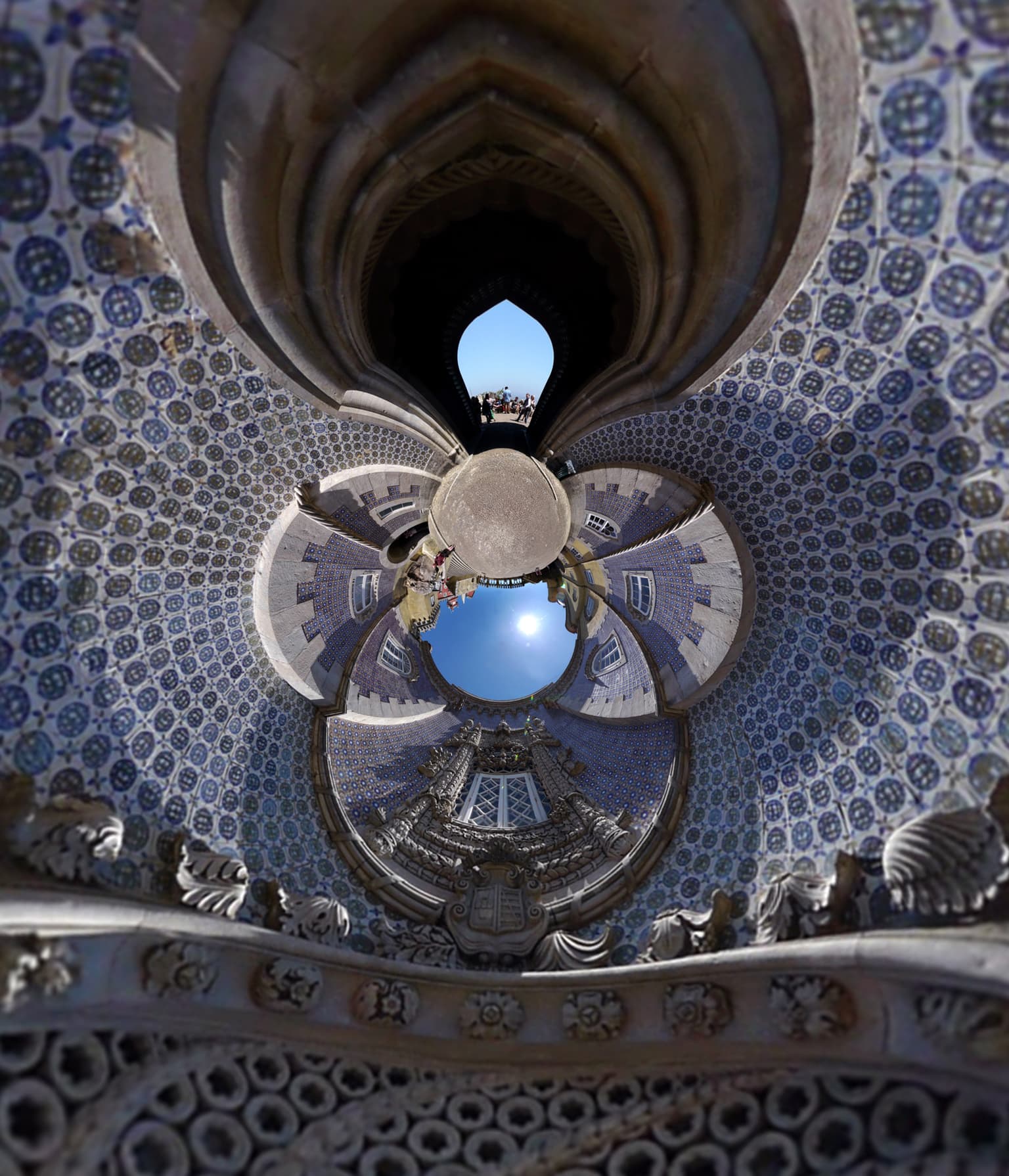2012 Joint Mathematics Meetings
Bruce Torrence
Artists
Bruce Torrence
Professor Emeritus of Mathematics
Randolph-Macon College
Ashland, Virginia, USA
Statement
A mathematician with longtime passion for photography, I've been exploring recent developments in digital imagery which allow me to utilize mathematics and computer programming to solve visual problems. In particular, I've been looking for ways to depart from the standard rectilinear projection of ordinary lenses in order to widen the field of view. A wider field of view enables the reader to understand architectural structure from a vantage point inside that structure. It challenges the viewer to make sense of the scene. And it is my hope that images employing mathematical projections will lead the curious viewer to a better understanding of the underlying mathematical principles. The images shown here were created by shooting a sequence of photographs from the same vantage point, with the camera pointing in a different direction for each shot. The overlapping images were then stitched together pairwise, and a "spherical" panorama of the complete scene was created. Stereographic projection was then applied to the spherical panorama to create the artwork shown here. Stereographic projection has three beautiful properties. First, it allows a far wider field of view than an ordinary rectilinear photograph. Second, lines in the original scene become either lines or circles in the projected image. And finally, the mapping is conformal, so that small features in the scene may be scaled or rotated, but otherwise they are not distorted. Distortion occurs only at a global scale---the more you zoom in on any feature, the more ordinary it looks.
Artworks

Lisbon Oriente Station
Panoramic Photograph
2011

Courtyard at Pena Palace 2
Panoramic Photograph
2011